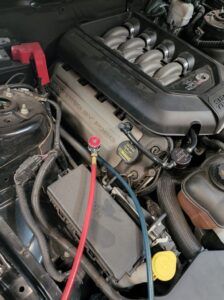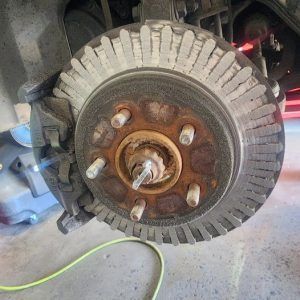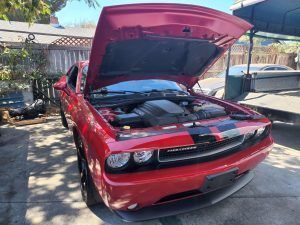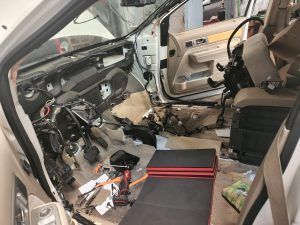What Is an Automotive Battery and What Does It Do?
An automotive battery is a critical component of a vehicle’s electrical system, providing the initial power needed to start the engine and supporting various electrical functions while the vehicle is running. Whether you drive a gasoline, diesel, hybrid, or electric vehicle, the battery plays a central role in maintaining functionality, reliability, and overall performance. Understanding how automotive batteries work, their components, types, and functions can help you appreciate their importance and maintain them effectively.
In this comprehensive guide, we’ll explore what an automotive battery is, how it works, its key components, different types of batteries, and the role it plays in modern vehicles.

1. What Is an Automotive Battery?
An automotive battery is a rechargeable energy storage device that supplies electrical power to a vehicle’s starter motor, ignition system, and other electrical components. The most common type of automotive battery is the lead-acid battery, which has been the industry standard for over a century. However, with advancements in automotive technology, newer battery types like lithium-ion (Li-ion) and nickel-metal hydride (NiMH) are gaining popularity, especially in hybrid and electric vehicles.
Automotive batteries are designed to provide a short burst of high current to start the engine and then recharge while the vehicle is running. They also power various accessories such as lights, infotainment systems, power windows, and climate control when the engine is off or during periods of low alternator output.
2. How Does an Automotive Battery Work?
An automotive battery operates on the principle of electrochemical energy conversion. It stores energy in chemical form and converts it into electrical energy when needed. This process involves several key steps:
a) Energy Storage
Inside the battery, chemical reactions occur between the positive and negative electrodes (plates) and the electrolyte solution (typically sulfuric acid and water in lead-acid batteries). This reaction stores energy in the form of potential chemical energy.
b) Energy Release
When the vehicle’s ignition is turned on, the battery releases this stored energy by initiating a chemical reaction that generates an electrical current. This current flows from the battery to the starter motor, enabling the engine to crank and start.
c) Recharging
Once the engine is running, the vehicle’s alternator takes over, generating electrical power and recharging the battery. The alternator ensures the battery maintains a sufficient charge level to power the vehicle’s electrical systems and restart the engine when needed.
3. Key Components of an Automotive Battery
Automotive batteries consist of several essential components that work together to store and deliver electrical energy. Understanding these components helps in diagnosing battery issues and maintaining optimal performance:
a) Battery Case
The outer casing of the battery is made from durable, heat-resistant plastic or rubber, protecting internal components from external damage and containing the electrolyte solution.
b) Electrodes (Plates)
Automotive batteries have two types of plates:
- Positive plates are coated with lead dioxide (PbO₂).
- Negative plates are made of sponge lead (Pb).
The plates are submerged in the electrolyte solution, facilitating the chemical reactions needed to produce electrical energy.
c) Electrolyte
The electrolyte in a lead-acid battery is a mixture of sulfuric acid and water. It facilitates the chemical reactions between the positive and negative plates, enabling the battery to store and release energy.
d) Terminals
Automotive batteries have two terminals:
- The positive terminal (+) is marked with a red cover and a “+” symbol.
- The negative terminal (-) is marked with a black cover and a “-” symbol.
These terminals connect the battery to the vehicle’s electrical system, enabling the flow of current.
e) Separator
Separators are insulating materials placed between the positive and negative plates to prevent short-circuiting while allowing ions to pass through during chemical reactions.
f) Battery Cells
Most automotive batteries have six cells, each producing approximately 2 volts, resulting in a total output of 12 volts. Each cell contains a set of positive and negative plates submerged in the electrolyte.
4. Functions of an Automotive Battery
Automotive batteries perform several vital functions that are essential for vehicle operation:
a) Starting the Engine
The primary function of the battery is to provide the initial burst of electrical energy needed to crank the engine. This is especially important in cold weather when engines require more power to start.
b) Powering Electrical Systems
The battery supplies power to various electrical components, such as headlights, dashboard lights, power windows, radios, and air conditioning, especially when the engine is off or idling.
c) Stabilizing Voltage
Modern vehicles have complex electronic systems that require a stable voltage to function correctly. The battery acts as a voltage stabilizer, ensuring that the electrical systems receive a consistent flow of power, even when there are fluctuations in the alternator’s output.
d) Supporting Stop-Start Systems
In vehicles equipped with start-stop technology, the battery must provide frequent restarts without compromising performance. Advanced batteries, such as Enhanced Flooded Batteries (EFB) and Absorbent Glass Mat (AGM) batteries, are specifically designed to handle this load.
5. Types of Automotive Batteries
The type of battery used in a vehicle depends on its specific needs, such as engine size, electrical demands, and driving conditions. Below are the most common types of automotive batteries:
a) Flooded Lead-Acid Batteries
Flooded lead-acid batteries are the most widely used in traditional vehicles. They are known for their affordability and reliability. However, they require regular maintenance, such as checking electrolyte levels and cleaning terminals.
Advantages:
- Cost-effective
- Widely available
- High cranking power
b) Absorbent Glass Mat (AGM) Batteries
AGM batteries are a type of sealed lead-acid battery designed for high-performance vehicles and those with start-stop systems. They use a fiberglass mat to absorb the electrolyte, making them spill-proof and more resistant to vibration.
Advantages:
- Maintenance-free
- Longer lifespan than traditional lead-acid batteries
- Better performance in extreme temperatures
c) Enhanced Flooded Batteries (EFB)
EFBs are an upgrade over traditional flooded batteries, designed to handle the increased load of start-stop systems. They offer improved charge acceptance and durability.
Advantages:
- Affordable alternative to AGM batteries
- Better performance in start-stop systems
- Increased resistance to deep cycling
d) Lithium-Ion (Li-Ion) Batteries
Lithium-ion batteries are commonly used in electric vehicles (EVs) and hybrid electric vehicles (HEVs). They offer higher energy density, lighter weight, and faster charging compared to lead-acid batteries.
Advantages:
- Lightweight and compact
- Long lifespan with more charge cycles
- Faster charging and better energy efficiency
e) Nickel-Metal Hydride (NiMH) Batteries
NiMH batteries are used primarily in hybrid vehicles. They provide a good balance between performance, cost, and environmental impact.
Advantages:
- Durable and reliable
- Environmentally friendly (less toxic materials)
- Low maintenance
6. Signs of a Failing Automotive Battery
Recognizing the signs of a failing battery can help prevent unexpected breakdowns:
- Slow Engine Crank: A weak battery may struggle to provide the power needed to crank the engine.
- Dim Lights: Reduced brightness in headlights or interior lights indicates a weak battery.
- Check Engine Light: A malfunctioning battery can trigger the check engine light.
- Corroded Terminals: Corrosion around the terminals can lead to poor electrical connections.
- Frequent Jump-Starts: If your vehicle frequently requires a jump-start, it’s likely time to replace the battery.
7. Maintaining an Automotive Battery
Proper maintenance can extend the lifespan of your battery:
- Regular Inspections: Check for corrosion, loose connections, and physical damage.
- Clean Terminals: Use a terminal cleaner or baking soda solution to remove corrosion.
- Check Electrolyte Levels: In flooded batteries, ensure the electrolyte level is adequate.
- Test the Battery: Regular voltage testing can help detect issues early.
Conclusion
An automotive battery is an indispensable part of a vehicle’s electrical system, ensuring the engine starts and all electrical components function properly. With advancements in battery technology, modern vehicles now use a variety of battery types tailored to their specific needs, from traditional lead-acid to high-performance lithium-ion batteries. Proper care and timely maintenance are essential for ensuring a battery’s longevity and performance, helping drivers avoid unexpected issues and costly repairs.







